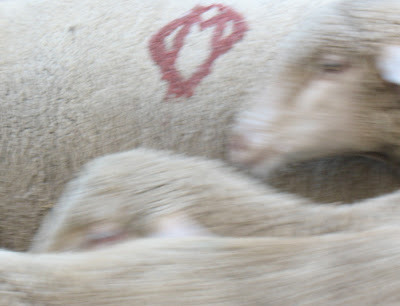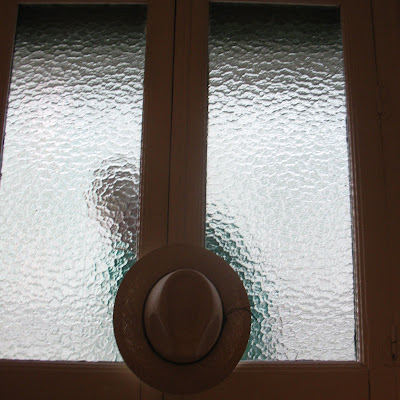Thursday, December 29, 2011
Current Favourite Sentence
The game can also be played as a children's party game, without the drinking.
Labels:
sentences
Wednesday, December 28, 2011
George Allison (1883-1957)

A curiosity: I was led to Mr. Allison via Philip Larkin (I'm reading the Letters to Monica at the moment, which are enjoyably tinned-sardiney), who asks Monica Jones on 12 March 1957 if she remember's Allison's 'football commentaries, in the old square-4 days? He was the most exciting one I ever heard: his "It's a goal!!!!" was the most abandoned shriek-roar we shall ever know.'
My search for the shriek-roar led me to this, a man who makes recordings of old vinyl records played on his gramophone:
The only goal comes at 3.30 on the video: some insight gained into Larkin's ideas of wild abandonment.
More information about Allison here: a career path that goes from sports journalism to football management is difficult to imagine nowadays.
I can't find an original eight-square commentary grid (as mentioned by Larkin and the gentleman with the gramophone), so here's a modern one:

And here, finally, is a truly abandoned shriek-roar:
Labels:
faces
Tuesday, December 27, 2011
John Brett (1831-1902)

The Stonebreaker (1858). One of Philip Larkin's favourite paintings. More information about Brett here.
Caran d'Ache (1858-1909)

Pseudonym of Emmanuel Poiré, cartoonist. His pseudonym comes from the Russian word for pencil, карандаш. I'd always thought that the etymology worked the other way round, and that Russians didn't have pencils until the mid-nineteenth century. A little reflection should have made me realise that this was a foolish notion. Карандаш comes from Turkic.
Here's Terence Wade's Russian Etymological Dictionary on pencils:
КАРАНДАШ [karandáš] 'pencil'. 17th century, from Tkc., cf. Turk. qara 'black', taş 'stone', perhaps a reference to graphite shales or the gnesses from which graphite is mined (for increscent -н-, cf. каланчá 'watch-tower', also a Tkc. loan). Caran d'ache is used as a brand name by the well-known Swiss manufacturers of high-quality writing implements.
Wade doesn't mention the link between the cartoonist and the pencil company; the Wikipedia page for Poiré insists that the company was named after him. Anyway, here's a cartoon of his, sent me by my brother Ben:

In related (or almost related) etymological fun, here's Wade on railway stations:
ВОКЗАЛ [vokzál] 'mainline station'. From Eng. Vauxhall, a pleasure garden opened in 1661 and a favourite resort of the English metropolis until its closure in 1859. Similar gardens appeared in [the] 1770s in St. Petersburg and Moscow (as фоксал/воксал, with subsequent replacement of -с- by -з-, by analogy with зал 'hall'), described as 'illuminated garden[s] with pleasure pavilions, buffets, music, plays and comic operas', and later in the provinces. With the advent of railways the Pavlovsk terminus (вокзал) of the St. Petersburg-Pavlovsk line (opened in 1837) combined the functions of passenger hall and concert hall (with orchestra and gypsy singing and, from 1840, symphony concerts). As the prestige of вокзалы as leisure centres declined, the meaning 'railway station' (recorded in dictionaries late 19th century) emerged as the sole connotation of the word.
Labels:
dolls,
faces,
languages,
translation
Monday, December 26, 2011
Luis de Góngora y Argote (1561-1627)

More information here. The following is a poem I am very fond of at the moment.
¡Que se nos va la Pascua, mozas,
Que se nos va la Pascua!
Mozuelas las de mi barrio,
Loquillas y confiadas,
Mirad no os engañe el tiempo,
La edad y la confianza.
No os dejéis lisonjear
De la juventud lozana,
Porque de caducas flores
Teje el tiempo sus guirnaldas.
¡Que se nos va la Pascua, mozas,
Que se nos va la Pascua!
Vuelan los ligeros años,
Y con presurosas alas
Nos roban, como harpías,
Nuestras sabrosas viandas.
La flor de la maravilla
Esta verdad nos declara,
Porque le hurta la tarde
Lo que le dio la mañana.
¡Que se nos va la Pascua, mozas,
Que se nos va la Pascua!
Mirad que cuando pensáis
Que hacen la señal del alba
Las campanas de la vida,
Es la queda, y os desarman
De vuestro color y lustre,
De vuestro donaire y gracia,
Y quedáis todas perdidas
Por mayores de la marca.
¡Que se nos va la Pascua, mozas,
Que se nos va la Pascua!
Yo sé de una buena vieja
Que fue un tiempo rubia y zarca,
Y que al presente le cuesta
Harto caro el ver su cara,
Porque su bruñida frente
Y sus mejillas se hallan
Más que roquete de obispo
Encogidas y arrugadas.
¡Que se nos va la Pascua, mozas,
Que se nos va la Pascua!
Y sé de otra buena vieja,
Que un diente que le quedaba
Se lo dejó este otro día
Sepultado en unas natas,
Y con lágrimas le dice:
«Diente mío de mi alma,
Yo sé cuándo fuistes perla,
Aunque ahora no sois nada.»
¡Que se nos va la Pascua, mozas,
Que se nos va la Pascua!
Por eso, mozuelas locas,
Antes que la edad avara
El rubio cabello de oro
Convierta en luciente plata,
Quered cuando sois queridas,
Amad cuando sois amadas,
Mirad, bobas, que detrás
Se pinta la ocasión calva.
¡Que se nos va la Pascua, mozas,
Que se nos va la Pascua!
Chocolate Money

The (supposed) face of Juan Carlos I on a chocolate euro I got for Christmas. More unflattering confectionery is difficult to imagine. One to add to any collection of republican coinage.
Sunday, December 25, 2011
Griffins
From the etymological dictionary:
grifo (animal fabuloso), s. XIII. Tom. del lat. tardío gryphus, y este del gr. gryps, grypos, id. En la acepción 'llave de cañería', 1884, se explica por la costumbre de adornar con cabezas de personas o animales las bocas de agua de las fuentes.
That is, 'taps' in Spanish are called 'grifos', which is also the word for 'griffin'. This name arises because of the custom of decorating the mouths of springs or public fountains with ornate heads of people or animals.
Happy Festive Etymology to you all!
grifo (animal fabuloso), s. XIII. Tom. del lat. tardío gryphus, y este del gr. gryps, grypos, id. En la acepción 'llave de cañería', 1884, se explica por la costumbre de adornar con cabezas de personas o animales las bocas de agua de las fuentes.
That is, 'taps' in Spanish are called 'grifos', which is also the word for 'griffin'. This name arises because of the custom of decorating the mouths of springs or public fountains with ornate heads of people or animals.
Happy Festive Etymology to you all!
Labels:
drink,
faces,
fauna,
languages,
poetry,
sea-monsters,
translation
Wednesday, December 21, 2011
Iain Lom (c.1625-c.1710)
Scots Gaelic poet, author of the the resonant description of wicked John Menteith, the 'stripped tree of the false apples, Neil’s son of woeful Assynt'. More information here and here.
Labels:
catholicism,
languages,
poetry,
translation
Tuesday, December 20, 2011
Elizabeth Kata (1912-1998)

Author of Be Ready with Bells and Drums (1961), which was the basis for the film A Patch of Blue (1965). More information here.
Yuri Irsenovich Kim (1941-2011)

Born on the mystical slopes of Baekdu Mountain, under an unprecedented double rainbow, his birth was indicated by a new star forming in the heavens. Died in a train.
Thursday, December 15, 2011
Sunday, December 04, 2011
Fascinating Fact of the Day!

Benzocaine, a local anaesthetic used in a number of over-the-counter remedies such as cough drops (and also used in the lubrication for certain types of condom, as it desensitises the nerve endings in the penis and therefore, in theory, helps prevent premature ejaculation) is one of the major substances employed by abalone farmers. It is difficult to shift your adult abalone because of his tenacious grip on the rock beneath him, so you give him a bit of Benzocaine and his huge muscular foot relaxes enough for you to move him around the aquaculture tank.
Labels:
industry,
sea-monsters
Svetlana Iosifovna Alliluyeva (1926-2011)

Not one of the shock workers or propaganda chicks of the ancien régime, but even sadder. The closer you get to the centre, the sadder it all becomes. The photo is a perfect illustration of Larkin's 'Something is pushing them / To the side of their own lives', but Larkin was talking about children pushing their parents, which seems somehow healthier. More information here
Labels:
faces
Saturday, December 03, 2011
Santiago Paulós (1983- )

Abuela II con derrame (2003). More information about the artist here. I translated a text for a catalogue of his paintings, which I at first thought was a favour, but now I see was an honour.
Labels:
faces,
translation
Friday, November 11, 2011
Thursday, November 10, 2011
Saturday, November 05, 2011
Sean Bonney

He's coy about his age (early forties?). A wikipedia page is here. The reason I like him this morning, an interview, is here.
Wednesday, November 02, 2011
Tuesday, November 01, 2011
Sunday, October 30, 2011
Transhumance


Jesús Garzón, an environmentalist, has spent a lot of effort reviving the old custom of transhumance (moving flocks from summer to winter pastures) in Spain. One of the traditional transhumance paths runs, funnily enough, through the centre of Madrid (when I say 'traditional', I mean, dating back to 1250 or so, when running sheep through the centre of Madrid wasn't as odd as all that). The shepherds pay 25 maravedíses (the word has three plural forms; I am using the one the RAE judges 'most vulgar'; the others are maravedís and maravedíes) for the privilege. More information here. The upshot of this is that the centre of Madrid was today filled with livestock. I was too lazy to follow the sheep droppings and horse dung all the way to the Plaza de Cibeles, so I set up shop outside the Plaza Mayor, and waited to see what came past. What came past was, mostly, sheep:








Here's a separate section on what we might call 'brand identity', if we were less funny than we in fact think we are:







And here are two photos of shepherds on horseback using mobile phones:


And finally, a horse:

All in all, a fun way to spend a morning.
Labels:
adventures,
faces,
fauna,
industry
Tuesday, October 25, 2011
Wombat News
Ridiculously cute baby wombat footage. Even as a baby, he's quite a chunker.
Labels:
fauna
Current Favourite Sentences
Fourthly, without regard of them, or of us, I say, that even in regard of Himselfe, Hoc erit Signum. Would there be a proportion between the Signe and the Signatum? There is so. This, holds good proportion with the ensuing course of his life, and death. And, (all considered), it is even Signum adaequatum. We may well begin with Christ in the Cratch: We must end with Christ on the Crosse. The Cratch is a Signe of the Crosse. They that write de rusticâ, describe the forme of making a Cratch Crosse-wise. The Scandal of the Cratch is a good preparative, to the Scandal of the Crosse. To be swadled thus, as a Child, doth that offend? What then, when ye shall see him pinion'd and bound as a Malefactor? To lye in a manger, is that so much? how then, when ye shall see Him hang on the Crosse? But so,-primo ne discrepet imum; that His beginning and His end may suit well and not disagree; Sic oportuit Christum nasci, thus ought Christ to be borne and this behoved to be His Signe.
Labels:
catholicism,
languages,
prose,
sentences,
translation
Sunday, October 23, 2011
Subscribe to:
Comments (Atom)

















